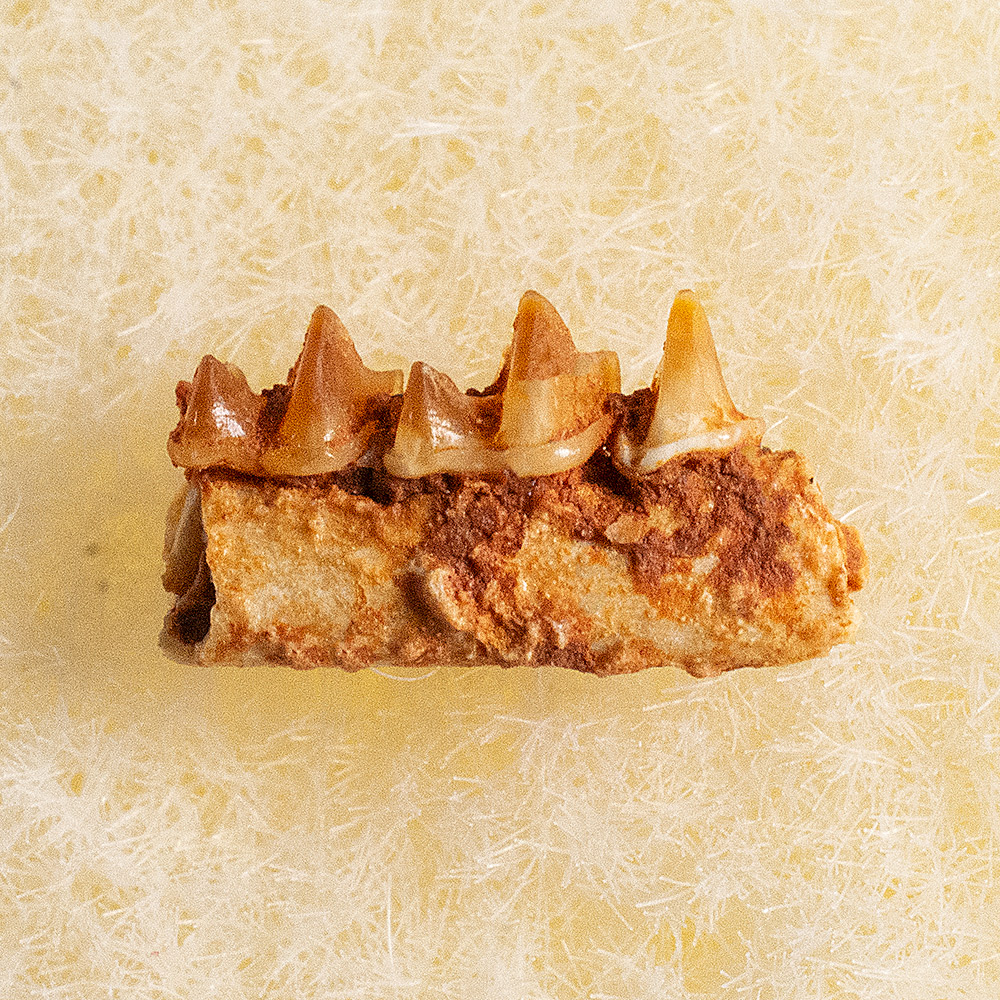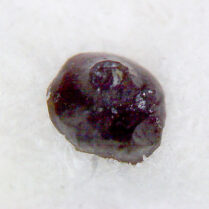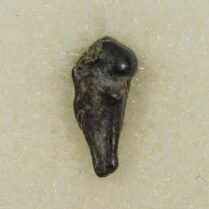Description
Vespertiliavus sp.
Late Eocene
Phosphorites de Quercy
Near Cahors, Les Rozieres, France
5mm jaw section with three teeth of a rare extinct bat.
Mammal. Chiroptera.
Vespertiliavus is an extinct genus of bat known from the middle Eocene to late Oligocene of Europe – best known from the Quercy Phosphorites of France. It is an early representative of a family, the Emballonuridae (the microbats), that still lives today.
The fossil record of bats dates back to the earliest Eocene, but because of a diversity of genera described from that time, their history certainly extends back into the Paleocene. Unfortunately, only teeth and jaws have been collected from that time but complete skeletons, near-modern form and with full flight capability, have been studied from the late-Early Eocene.
Fossil bat remains appear on the market only occasionally. A bat tooth is the kind of thing that appeals to many collectors – not just mammal specialists.





